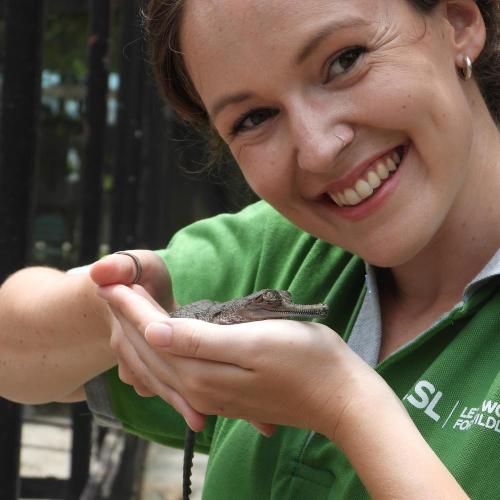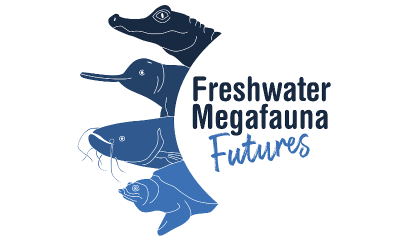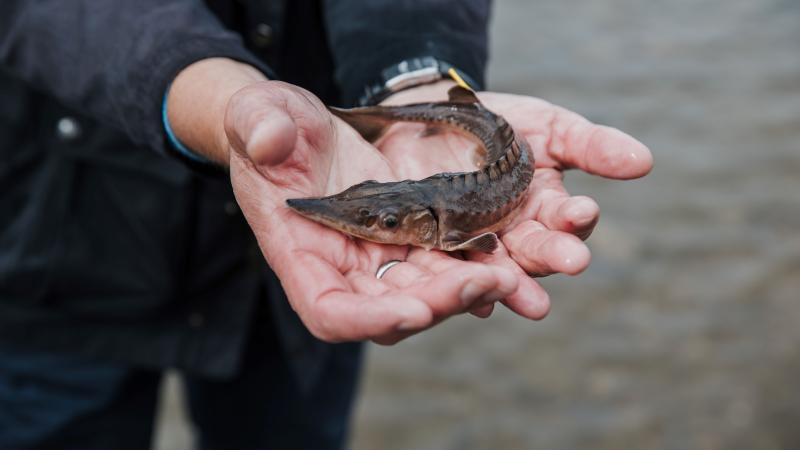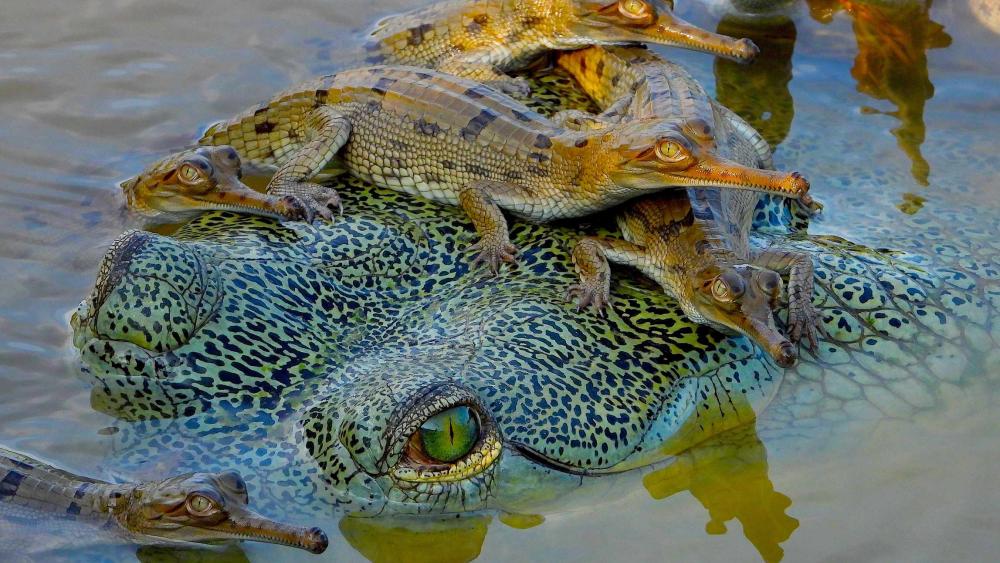
Adult female gharial with hatchlings. | Photo: Phoebe Griffith
The IUCN Green Status of Species is a complement to the more widely known Red List, which is the global standard for assessing the risk of extinction of an individual species, listing the gharial (Gavialis gangeticus) as Critically Endangered (CR). The newly released Green Status considers how far the species is from complete recovery. It also considers the legacy of past conservation efforts, and the potential for future recovery in different regions. These regions are carefully considered spatial units, assigned as part of the assessment. In this inaugural Green Status assessment, the ghariall has now been classified as ‘Critically Depleted’.
“Crazy crocs” with a high biological and cultural relevance
“Gharial are a very weird crocodilian, with their long snouts, and the bulbous ‘ghara’ structure on the end of the snouts of the huge adult males. The name comes from a local pot that it resembles in appearance”, explained Phoebe Griffith. “From an ecological and evolutionary perspective, they are quite unique. Additionally, looking back through the history of South Asia, you can spot gharial swimming through artworks for the last 5000 years. This shows the species is also a critical piece of cultural heritage, that people have shared rivers with for thousands of years, posing no threat to humans. It is only with the emergence of large-scale river infrastructure, initiated in the colonial period and continuing into the modern day, that everything started to go wrong for gharial”, underlined Phoebe Griffith whose research at IGB focuses on the conservation of freshwater megafauna, with a particular focus on their biocultural diversity, recognizing the various cultural roles of freshwater megafauna species as a key aspect of their conservation.
Future conservation action should focus on habitat protection and restoration
Gharial are important flagship and umbrella species in the rivers of India and Nepal, being of high cultural relevance, and protecting their habitats also supports many other species. Yet thanks to the legacy of past conservation efforts, the unique gharial has not vanished completely, the author team of the assessment underlines. But without protected areas and prohibitions on gill net fishing, hunting and egg collection, gharial would almost certainly have disappeared already. “The assessment helps us look to the future of gharial conservation, and identify existing populations that could be given a boost towards recovery by innovative, evidence-based conservation”, explained Phoebe Griffith, who is also co-chair of the European Croc Network, also of the Early-Career Croc Network, and on the Steering Committee of the IUCN SSC Crocodile Specialist Group.
According to the author team, there is still hope for gharial. But conservation actions need to be strategically focused where these will have maximum impact, especially habitat protection and restoration, and actions to support coexistence with people.
Population Changes in Gharials (Gavialis gangeticus) Vary Spatially in Chitwan National Park, Nepal
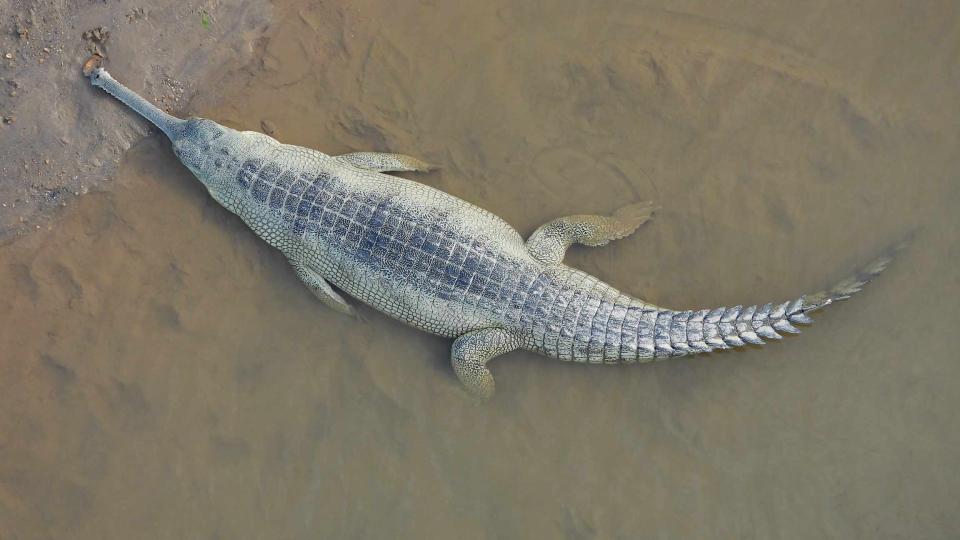
Adult female gharial in Baghmara Community Forest, Nepal. | Photo: Phoebe Griffith
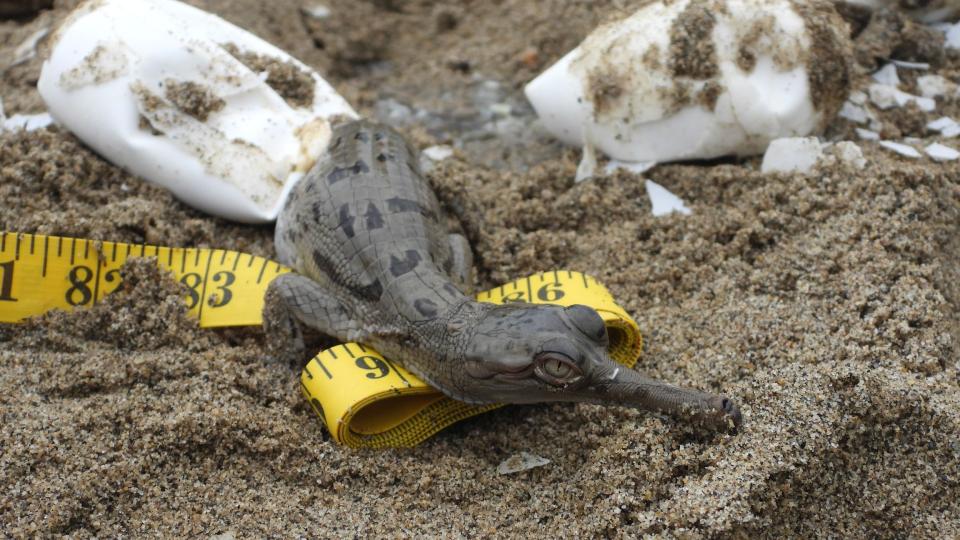
Hatchling gharial in Chitwan, Nepal. | Photo: Phoebe Griffith
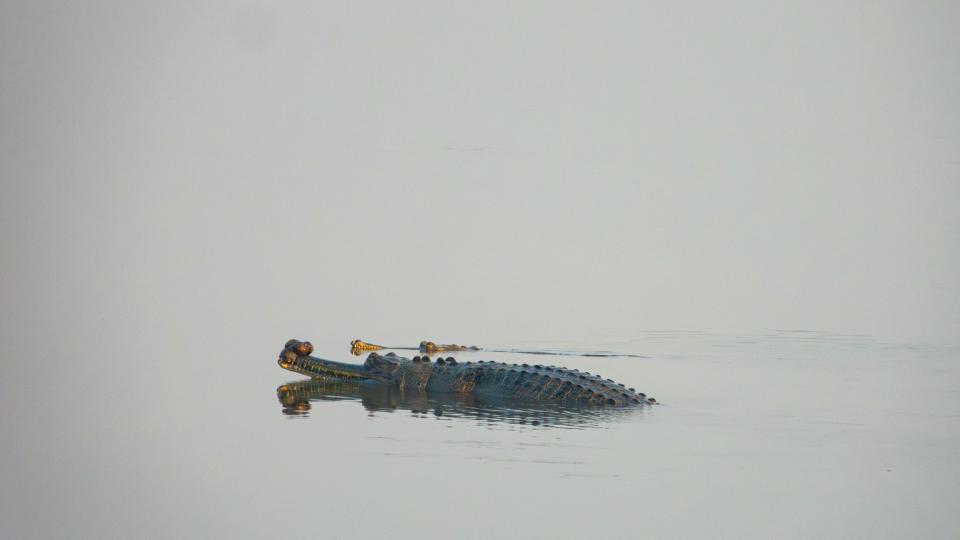
The Himalayan Gharial Project: adult male and female gharial. | Photo: Phoebe Griffith


